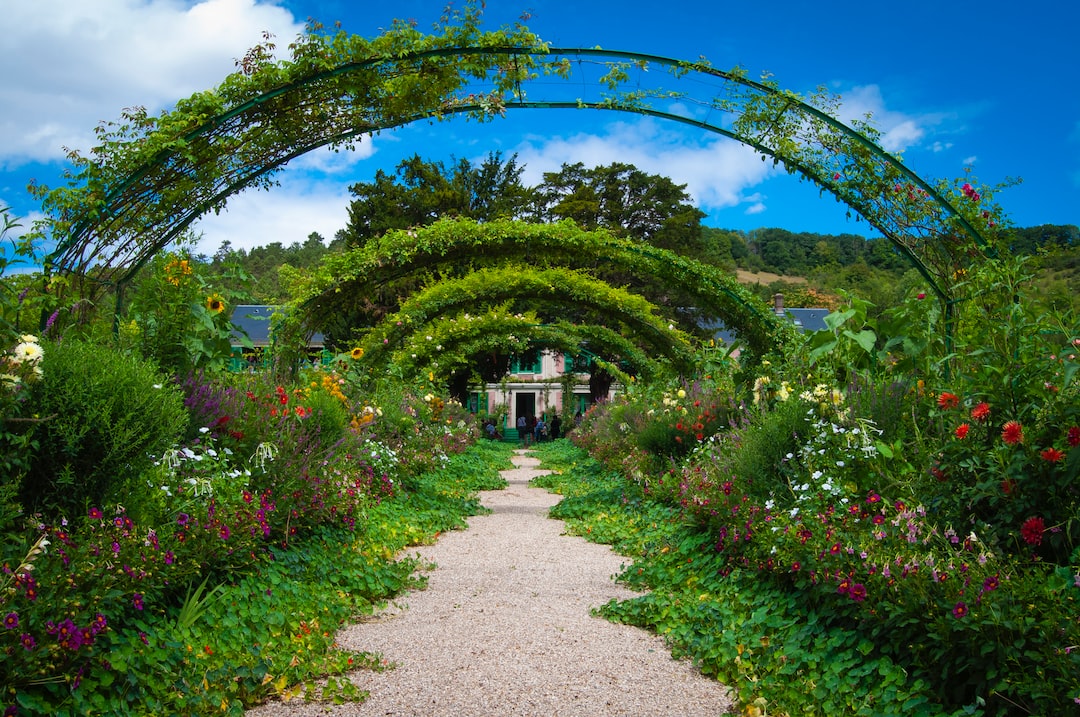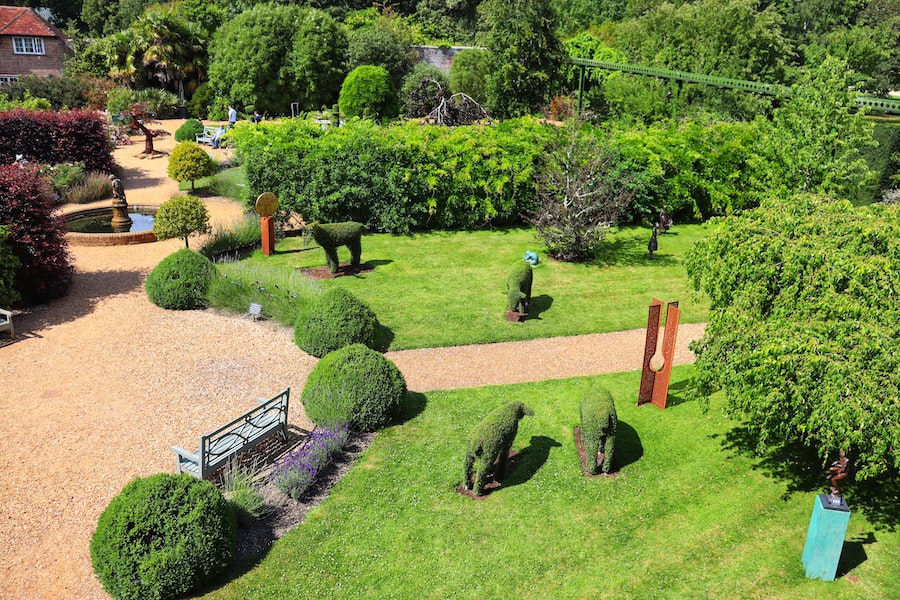Digging into the Dirt: Can Garden Soil be Used for Potted Plants?

Using garden soil for potted plants is a popular choice among gardeners for several reasons. Garden soil is readily available and cost-effective, making it an attractive option for those looking to save money on potting soil. Additionally, garden soil contains a variety of nutrients that can benefit plants, as it is typically enriched with organic matter and minerals. However, there are also drawbacks to using garden soil, such as the potential for pests and diseases. In this article, we will explore the benefits and drawbacks of using garden soil for potted plants, as well as provide tips and techniques for preparing and maintaining garden soil in pots.
Key Takeaways
- Garden soil and potting mix are not interchangeable for potted plants.
- Garden soil can provide nutrients and beneficial microorganisms, but may also contain pests and diseases.
- Factors to consider when using garden soil include drainage, pH levels, and the type of plant.
- Preparing garden soil for use in pots involves sterilization and amendment with organic matter.
- Mixing garden soil with potting mix can improve drainage and nutrient availability for potted plants.
Understanding the Differences Between Garden Soil and Potting Mix
Garden soil, also known as topsoil, is the natural soil found in gardens and outdoor spaces. It is composed of a mixture of sand, silt, clay, organic matter, and various minerals. On the other hand, potting mix, also known as potting soil or container mix, is specifically formulated for use in containers and pots. It is typically a blend of peat moss, perlite or vermiculite, and compost or other organic matter.
The main difference between garden soil and potting mix lies in their composition and structure. Garden soil tends to be heavier and denser than potting mix, which can lead to poor drainage in containers. Potting mix, on the other hand, is designed to be lightweight and well-draining to prevent waterlogged roots. This is especially important for potted plants, as excess moisture can lead to root rot and other issues.
Benefits and Drawbacks of Using Garden Soil for Potted Plants
There are several advantages to using garden soil for potted plants. One of the main benefits is cost-effectiveness. Garden soil is often less expensive than commercial potting mixes, making it an attractive option for those on a budget. Additionally, garden soil is readily available, as it can be obtained from your own garden or purchased in bulk from garden centers.
Another advantage of using garden soil is its nutrient content. Garden soil is typically enriched with organic matter and minerals, which can provide essential nutrients for plant growth. This can be especially beneficial for long-term potted plants, as the nutrients in the soil can sustain the plants over an extended period of time.
However, there are also drawbacks to using garden soil for potted plants. One of the main concerns is the potential for pests and diseases. Garden soil may contain weed seeds, insects, and pathogens that can harm potted plants. Additionally, garden soil may not have the ideal pH or nutrient balance for certain plants, which can affect their growth and overall health.
Factors to Consider When Using Garden Soil for Potted Plants
| Factor | Description |
|---|---|
| Drainage | The soil should allow water to drain easily to prevent root rot. |
| Nutrients | The soil should contain enough nutrients to support plant growth. |
| pH level | The soil pH level should be appropriate for the plants being grown. |
| Texture | The soil should have a good texture for root growth and water retention. |
| Organic matter | The soil should contain enough organic matter to improve soil structure and fertility. |
When using garden soil for potted plants, there are several factors to consider to ensure optimal plant growth. One of the most important factors is soil pH. Different plants have different pH preferences, so it is important to match the pH of the garden soil with the pH requirements of the plants you are growing. This can be done by testing the pH of the soil and making adjustments as necessary.
Another important factor is drainage. As mentioned earlier, garden soil tends to be heavier and denser than potting mix, which can lead to poor drainage in containers. To improve drainage, you can add perlite or vermiculite to the garden soil or create a layer of gravel at the bottom of the pot.
Lastly, nutrient content is another factor to consider when using garden soil for potted plants. While garden soil may contain some nutrients, it may not have the ideal balance for certain plants. To ensure that your plants receive adequate nutrients, you can supplement with organic fertilizers or amend the garden soil with compost or other organic matter.
How to Prepare Garden Soil for Use in Potted Plants
Before using garden soil in potted plants, it is important to sterilize the soil to prevent pests and diseases. This can be done by baking the soil in the oven at a temperature of 180°F (82°C) for 30 minutes. Alternatively, you can solarize the soil by covering it with a clear plastic tarp and leaving it in direct sunlight for several weeks.
In addition to sterilization, you can also improve the drainage and nutrient content of garden soil for potted plants. To improve drainage, you can add perlite or vermiculite to the soil mix. These materials help to create air pockets in the soil, allowing excess water to drain away from the roots.
To improve nutrient content, you can amend the garden soil with compost or other organic matter. This will help to replenish nutrients in the soil and provide a steady source of food for your potted plants. Simply mix the compost or organic matter into the garden soil before filling your pots.
Tips for Mixing Garden Soil with Potting Mix for Potted Plants

Mixing garden soil with potting mix can be beneficial for potted plants, as it combines the advantages of both types of soil. Garden soil provides nutrients and organic matter, while potting mix provides good drainage and aeration. The ratio of garden soil to potting mix will depend on the specific needs of your plants.
A general guideline is to use a mixture of 1 part garden soil to 1 part potting mix. This will provide a good balance of nutrients, drainage, and aeration. However, if you have plants that prefer well-draining soil, such as succulents or cacti, you may want to increase the proportion of potting mix in the mixture.
It is important to thoroughly mix the garden soil and potting mix together before filling your pots. This will ensure that the nutrients and other beneficial properties of the garden soil are evenly distributed throughout the mixture. You can use a garden fork or trowel to mix the soil, or simply use your hands to break up any clumps and blend the two types of soil together.
Techniques for Improving Garden Soil for Potted Plants
If you find that your garden soil is not ideal for potted plants, there are several techniques you can use to improve its quality. One of the most effective ways to improve garden soil is by adding organic matter. This can be done by incorporating compost, well-rotted manure, or leaf mold into the soil. Organic matter helps to improve soil structure, increase nutrient content, and enhance moisture retention.
Another technique for improving garden soil is by adding amendments such as lime or sulfur to adjust the pH. Lime is used to raise the pH of acidic soil, while sulfur is used to lower the pH of alkaline soil. It is important to test the pH of your garden soil before making any adjustments, as adding too much lime or sulfur can harm your plants.
Additionally, you can improve the drainage of garden soil by adding materials such as perlite or vermiculite. These materials help to create air pockets in the soil, allowing excess water to drain away from the roots. Simply mix them into the garden soil before filling your pots.
How to Choose the Right Plants for Garden Soil in Pots
When using garden soil in pots, it is important to choose plants that are well-suited for this type of soil. Some plants thrive in garden soil, while others may struggle due to its composition and structure. It is also important to match plants with the appropriate soil pH and nutrient requirements.
Plants that are well-suited for garden soil in pots include herbs, vegetables, annuals, and perennials. These plants tend to have moderate nutrient requirements and can tolerate a wide range of soil conditions. Additionally, they are often more forgiving when it comes to soil pH and drainage.
On the other hand, plants that prefer well-draining soil, such as succulents, cacti, and certain types of tropical plants, may not do well in garden soil. These plants require a soil mix that is specifically formulated for good drainage, such as a cactus or succulent mix.
To determine the pH and nutrient requirements of your plants, you can refer to plant care guides or consult with a local garden center. They can provide recommendations on the best types of plants for your specific garden soil and potting needs.
Maintenance and Care for Potted Plants Using Garden Soil
Proper maintenance and care are essential for potted plants using garden soil. One of the most important aspects of care is watering. It is important to water potted plants using garden soil thoroughly but not excessively. Overwatering can lead to root rot and other issues, while underwatering can cause the plants to wilt and suffer from nutrient deficiencies.
In addition to watering, fertilizing is also important for potted plants using garden soil. While garden soil may contain some nutrients, it may not have the ideal balance for certain plants. To ensure that your plants receive adequate nutrients, you can supplement with organic fertilizers or slow-release fertilizers. Follow the instructions on the fertilizer packaging for application rates and frequency.
Pruning is another important aspect of maintenance for potted plants using garden soil. Regular pruning helps to promote healthy growth and prevent overcrowding. It is important to remove dead or diseased leaves, as well as any branches that are crossing or rubbing against each other.
Lastly, it is important to monitor the pH and nutrient levels of the garden soil in your pots. This can be done by periodically testing the soil using a pH meter or test kit. If the pH or nutrient levels are not within the optimal range for your plants, you can make adjustments by adding amendments or fertilizers as necessary.
Is Garden Soil a Good Choice for Potted Plants?
In conclusion, using garden soil for potted plants has both benefits and drawbacks. Garden soil is cost-effective and readily available, making it an attractive option for those on a budget. Additionally, garden soil contains a variety of nutrients that can benefit plants. However, there are also drawbacks to using garden soil, such as the potential for pests and diseases.
When using garden soil for potted plants, it is important to consider factors such as soil pH, drainage, and nutrient content. These factors can affect plant growth and overall health. By preparing the garden soil properly and mixing it with potting mix, you can create a suitable growing medium for your potted plants.
Ultimately, whether or not garden soil is a good choice for potted plants will depend on your specific needs and preferences. If you are willing to put in the extra effort to prepare and maintain the soil, garden soil can be a cost-effective and sustainable option for potted plants. However, if you prefer a more convenient and foolproof option, commercial potting mixes may be a better choice.



